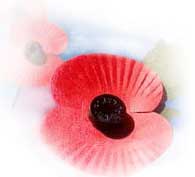Treatments
and therapies 2
The therapists
in most of the shell shock treatment centres followed one of six treatments:
suggestion under
hypnotism
suggestion without hypnotism
suggestion under anaesthetic (chloroform was administered for light anaesthesia
and was only used on certain categories of patient such as the deaf mutes)
'other methods' (such as Yealland's 'faradization')
diagnosis without treatment
Hydrotherapy,
electrotherapy, and massage were also used on occasion.
In
war situations, soldiers are taught two things: to advance and attack or to
retreat to safety. Often in WW1 neither was possible so the soldiers learned
to repress both instinct and emotion, which contributed to their breakdowns.
The 'repression' caused their nightmares, memory loss (amnesia), paralysis,
stammers and tremors ('the shakes'). Night was the period that the soldiers
feared most as the darkness brought back the memories of the sights and smells
of the trenches and battlefields. The founding of the hospital journal, The
Hydra, was an attempt to introduce a distraction during the long nights.
Click
on underlined text for more information - click on photograph for a larger image

